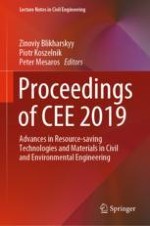This book gathers the latest advances, innovations, and applications in the field of effective methods of calculation, resource-saving technologies and advanced materials in civil and environmental engineering, as presented by leading international researchers and engineers at the XVII International Scientific Conference Current Issues of Civil and Environmental Engineering “Lviv- Košice – Rzeszów”, held in Lviv, Ukraine on September 11-13, 2019. It covers highly diverse topics, including structural shaping and optimization; aspects of structural behavior and modeling; advanced analysis methods; experimental tests and numerical simulations; design codes, in particular Eurocodes and other national and regional limit state codes; and highway and bridges engineering. It also discusses modern architectural and structural solutions; innovative materials and products; durability and maintenance; fabrication and erection; sustainability in construction; renewable energy sources; heat, gas and water supply; ventilation and air-conditioning; ecological and energy-saving technologies, modern water-purification and treatment technologies; and the protection of water ecosystems. The contributions, which were selected by means of a rigorous international peer-review process, highlight numerous exciting ideas that will spur novel research directions and foster multidisciplinary collaborations.
